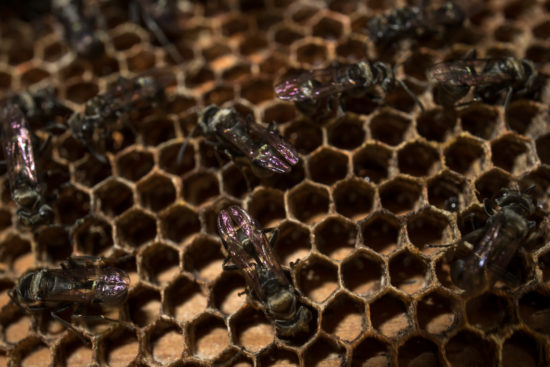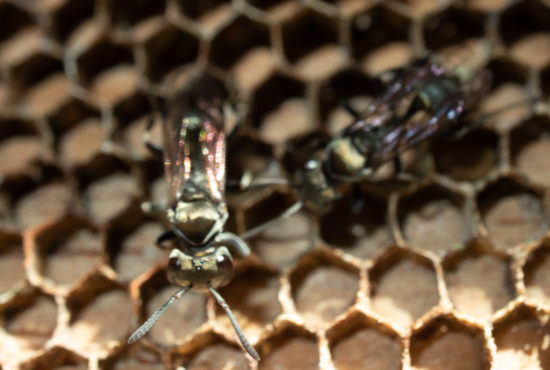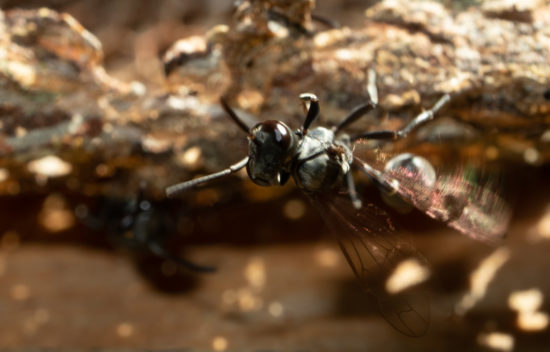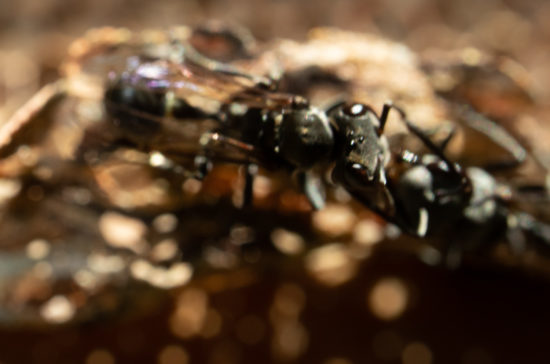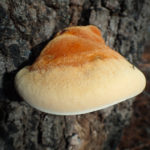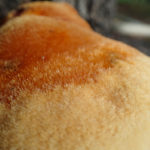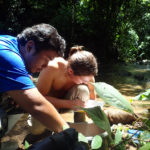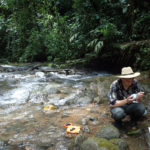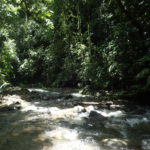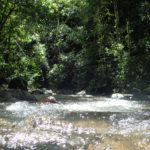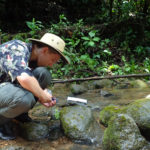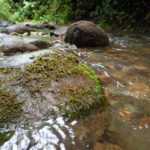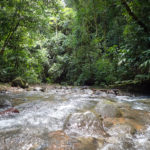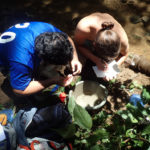Some wasps working away with couple of videos. I’m still getting used to this camera, and I like the video feature, particularly with the macro-lens.
Videos
Howler monkey calls
Ignore the video (it’s unclear), and appreciate the audio of these mantled howler monkeys (Alouatta palliata) calling in Palo Verde last year.
Another Sunrise from Guayacan
Not quite a dramatic as previous sunrises, but here’s the last sunrise I created a timelapse of from the peak of the Guayacan trail in Palo Verde in 2017. We got a late start (not mentioning any names, Barkley), so there was quite a bit of light by the time we reached the peak and I set the camera up.
A full frame version created from my camera:
A timelapse of the same sunrise, created a few minutes earlier with a locked exposure—the images became over-exposed quite quickly…
Clouds of Cerro Chai
A timelapse video of cloud movement in the valley as seen from the top of Cerro Chai in Las Alturas. Created from 299 photos at 1 sec intervals for about 5 minutes.
A full framed version.
A version created by my camera—an Olympus TG-4.
Horned lizard video
A quick video of the larger Phrynosoma douglassi.
A couple videos from the lab!
While covering protists in Principles of Biology II this week, the samples I projected to the class were quite exciting, so I created a few quick videos. And it’s been ages since I’ve shared anything on here… so, here’s a video of an engulfed Paramecium inside of an Chaos amoeba (badass genus, but not quite as cool as the yabby, Cherax descructor).
The amoeba is actively crawling around with pseudopods, and there are some other contaminate ciliates, including other Paramecium. Additionally, there are rotifers buzzing around and attaching themselves to the amoeba’s membrane, occasionally succumbing to the voracious predator. But, and this always blows my mind, rotifers are animals, composed of at least 1000 cells, while the amoeba is a single cell (although one of the largest)—look at the difference in scale!
The second video was also surprising. Normally, Pediastrum doesn’t pose much of a problem for students to find, since it’s relatively large and the colonies are abundant and sessile, not to mention bright green. This semester, there were some struggles across multiple section of the course, possibly because the algae weren’t doing well in their vial. So, I projected it only to find small moving swiggles bombarding the Pediastrum. My first thought were motile gametes or spores, but a colleague pointed out that their gametes and spores are more-or-less spherical…and these are spiral-like. My next thought—Sprillium bacteria! HUGE!
Sunset at La Roca
I’ve captured a new sunset timelapse from Palo Verde using an Olympus Tough Stylus TG-4 set to capture a single image every 10 seconds and combining the images with iMovie.
The first video displays each of 149 photos for 0.1 secs, while the second video displays photos for 0.2 secs and appears more choppy.
These two videos joins several others that I produced and posted in 2009:
Fungi at George L. Smith II State Park
Working in Río Java
John, Steve, and Hunter begin work in Río Java.

